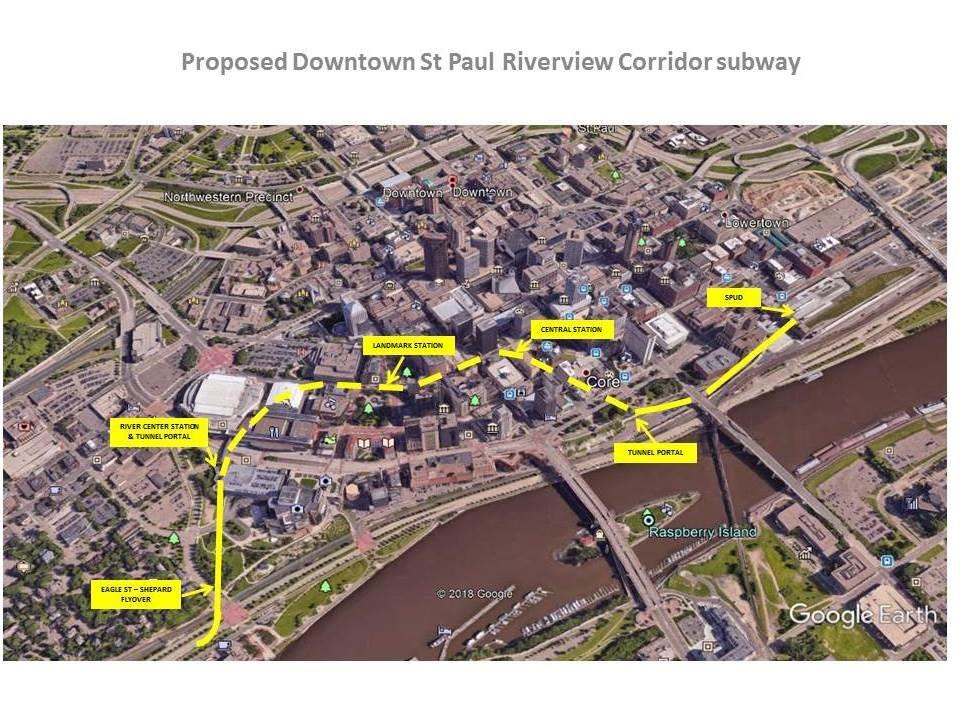There Is an Alternative to the Streetcar on West Seventh
by Jim Schoettler, Citizen Advocates for Regional Transit (C.A.R.T.)
The instincts of the Fort Road Community have been correct from the start: rail transit of any type does not belong on Fort Road/West Seventh, because the street is too narrow and operation of any rail line would be harmful for businesses, pedestrians and necessary traffic flow. The growing entertainment district near downtown needs wider sidewalks, not narrower walks with trains running inches away.
Yet Ramsey County has been deaf to the pleas of the Fort Road Community and has been blind to better alternatives that would achieve valid objectives for regional transit while protecting Fort Road. The problem goes deeper than Ramsey County. There is no entity planning for regional rail transit; the counties are on their own. So, it’s not surprising that Ramsey proposes a local solution to a regional need. In response, Citizen Advocates for Regional Transit was formed to bring common sense to this dilemma and show the way for practical solutions that serve our regional transit needs, while protecting the communities that host them.
To accomplish this, we need to work together — here’s our thinking:
From its beginning nearly two centuries ago, Fort Road has been the main route between the St. Paul area and the Fort Snelling area. Today, this Corridor is the key artery between the eastern third of the metro area and MSP Airport, the Mall of America and thousands of jobs there and farther west. Arterial and local public transit must be part of the connection because quick and dependable access to an international airport is vitally important to virtually all businesses and citizens. This is not going to change.
But Ramsey County’s Riverview Corridor Locally Preferred Alternative (LPA) does need to change.
We have laid out an alternative to the LPA that we think the Fort Road Community can support. It utilizes the CP Rail Spur from the Ford Site to approximately Grace & Western, where it crosses over the UP tracks and follows Shepard Road to Eagle Pkwy. where it turns north to downtown St Paul. Notice that it completely avoids Fort Road and crosses it only once. A Fort Road bus would provide local service to residents along Fort Road and connect to the nearby rail stations.
There are several additional important advantages to this alignment, including:
- It would cross the Mississippi River from the south end of the Ford Site to Minnehaha Ave. where it would connect to the Blue Line. This crossing eliminates all the impacts on Fort Snelling, serves the Ford Site and will save a quarter billion dollars.
- It would serve the Xcel Center and entertainment district with a station at Kellogg Blvd and then travel underground to stations below Landmark Center, Central Station and then terminate at Union Depot. It eliminates years of detours for demolition and rebuilding the streets (and perpetual interference thereafter).
- It is scalable. Our alternative will have its own exclusive guideway, so frequency and train length never interfere with Fort Road traffic.
- It can be combined with a parallel trail for pedestrian and bicycle use all the way from Minneapolis to downtown St Paul.
- It will provide more frequent, faster and more dependable service. The “modern streetcar” LPA, running in traffic, will be subject to all the delays every driver hates. For such an important transit link, building in such problems does not make sense and is inexcusable.
When the LPA was adopted in December, 2017, the resolution specified that in December, 2020 the Advisory Committee would reconvene to evaluate the project and determine whether the LPA “is likely to become a reality by 2025 and make alternate plans if necessary.”
What does make sense is changing the LPA. And when the LPA was adopted in December, 2017, it specified that in December, 2020 they would reconvene to evaluate the project and determine whether the LPA “is likely to become a reality by 2025 and make alternate plans if necessary.”
Alternate plans are necessary, available and superior. Let’s work together to save Fort Road and its community, while building a regional transit link that is good and necessary.
Jim Schoettler is a resident of the Highland area. He is a graduate of the University of Minnesota school of Architecture with a Bachelor degree in Environmental Design and an MBA from the Carlson School of Management. He started his career as a planner at the Met Council, is active in civic affairs, and is a founding member of Citizen Advocates for Regional Transit (C-A-R-T) — see citizensforregionaltransit.org.




